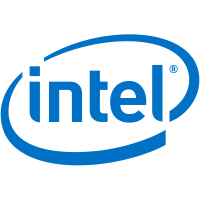Intel UHD Graphics 770 vs AMD Radeon Vega 9
Comparative analysis of Intel UHD Graphics 770 and AMD Radeon Vega 9 videocards for all known characteristics in the following categories: Essentials, Technical info, Video outputs and ports, API support, Memory. Benchmark videocards performance analysis: PassMark - G2D Mark, PassMark - G3D Mark, Geekbench - OpenCL, CompuBench 1.5 Desktop - Face Detection (mPixels/s), CompuBench 1.5 Desktop - Ocean Surface Simulation (Frames/s), CompuBench 1.5 Desktop - T-Rex (Frames/s), CompuBench 1.5 Desktop - Video Composition (Frames/s), CompuBench 1.5 Desktop - Bitcoin Mining (mHash/s), 3DMark Fire Strike - Graphics Score, GFXBench 4.0 - Car Chase Offscreen (Frames), GFXBench 4.0 - Car Chase Offscreen (Fps), GFXBench 4.0 - Manhattan (Frames), GFXBench 4.0 - Manhattan (Fps), GFXBench 4.0 - T-Rex (Frames), GFXBench 4.0 - T-Rex (Fps).
Differences
Reasons to consider the Intel UHD Graphics 770
- Videocard is newer: launch date 4 year(s) 0 month(s) later
- Around 12% higher boost clock speed: 1450 MHz vs 1300 MHz
- A newer manufacturing process allows for a more powerful, yet cooler running videocard: 10 nm vs 14 nm
- Around 32% better performance in PassMark - G2D Mark: 532 vs 402
- Around 20% better performance in PassMark - G3D Mark: 1908 vs 1588
| Specifications (specs) | |
| Launch date | 4 Nov 2021 vs 26 Oct 2017 |
| Boost clock speed | 1450 MHz vs 1300 MHz |
| Manufacturing process technology | 10 nm vs 14 nm |
| Benchmarks | |
| PassMark - G2D Mark | 532 vs 402 |
| PassMark - G3D Mark | 1908 vs 1588 |
Reasons to consider the AMD Radeon Vega 9
- 2.3x more pipelines: 576 vs 256
- Around 26% better performance in Geekbench - OpenCL: 9590 vs 7628
| Specifications (specs) | |
| Pipelines | 576 vs 256 |
| Benchmarks | |
| Geekbench - OpenCL | 9590 vs 7628 |
Compare benchmarks
GPU 1: Intel UHD Graphics 770
GPU 2: AMD Radeon Vega 9
| PassMark - G2D Mark |
|
|
||||
| PassMark - G3D Mark |
|
|
||||
| Geekbench - OpenCL |
|
|
| Name | Intel UHD Graphics 770 | AMD Radeon Vega 9 |
|---|---|---|
| PassMark - G2D Mark | 532 | 402 |
| PassMark - G3D Mark | 1908 | 1588 |
| Geekbench - OpenCL | 7628 | 9590 |
| CompuBench 1.5 Desktop - Face Detection (mPixels/s) | 46.442 | |
| CompuBench 1.5 Desktop - Ocean Surface Simulation (Frames/s) | 1011.7 | |
| CompuBench 1.5 Desktop - T-Rex (Frames/s) | 2.846 | |
| CompuBench 1.5 Desktop - Video Composition (Frames/s) | 40.941 | |
| CompuBench 1.5 Desktop - Bitcoin Mining (mHash/s) | 94.384 | |
| 3DMark Fire Strike - Graphics Score | 72 | |
| GFXBench 4.0 - Car Chase Offscreen (Frames) | 2591 | |
| GFXBench 4.0 - Car Chase Offscreen (Fps) | 2591 | |
| GFXBench 4.0 - Manhattan (Frames) | 1856 | |
| GFXBench 4.0 - Manhattan (Fps) | 1856 | |
| GFXBench 4.0 - T-Rex (Frames) | 2482 | |
| GFXBench 4.0 - T-Rex (Fps) | 2482 |
Compare specifications (specs)
| Intel UHD Graphics 770 | AMD Radeon Vega 9 | |
|---|---|---|
Essentials |
||
| Architecture | Generation 12.2 | Vega |
| Code name | Alder Lake GT1 | Vega Raven Ridge |
| Launch date | 4 Nov 2021 | 26 Oct 2017 |
| Place in performance rating | 832 | 833 |
| Type | Desktop | Laptop |
Technical info |
||
| Boost clock speed | 1450 MHz | 1300 MHz |
| Compute units | 32 | |
| Core clock speed | 300 MHz | |
| Manufacturing process technology | 10 nm | 14 nm |
| Peak Double Precision (FP64) Performance | 185.6 GFLOPS (1:4) | |
| Peak Half Precision (FP16) Performance | 1485 GFLOPS (2:1) | |
| Peak Single Precision (FP32) Performance | 742.4 GFLOPS | |
| Pipelines | 256 | 576 |
| Pixel fill rate | 11.60 GPixel/s | |
| Texture fill rate | 23.20 GTexel/s | |
| Thermal Design Power (TDP) | 15 Watt | 15 Watt |
| Transistor count | 4500 million | |
Video outputs and ports |
||
| Display Connectors | No outputs | |
API support |
||
| DirectX | 12.0 (12_1) | 12.1 |
| OpenCL | 3.0 | |
| OpenGL | 4.6 | |
| Shader Model | 6.4 | |
| Vulkan | ||
Memory |
||
| Shared memory | Yes | |










